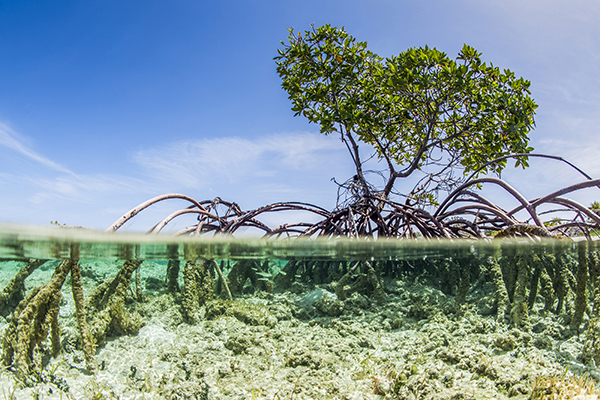Water purifier inspired by mangrove trees can remove salt from water
09/08/2021 / By Mary Villareal

Researchers have developed a new type of water purifier that mimics the way mangrove trees remove salt from salt water. This study not only offers a better understanding of the plants’ plumbing system, it could also lead to creating new desalination technologies.
An engineering feat that has long baffled scientists is how mangroves survive their environments by converting salt water into fresh water.
Co-author Jay Werber from Yale University shared that he and his team developed the mechanism based on a proposal for how mangroves work. He added that, since they were engineers and not biologists, they attacked the study from an engineering perspective.
The device, which the researchers are calling an artificial mangrove, combines the desalinating effects of the mangrove’s root, the capillary pumping of its leaves and the water-conducting capability of its stem. The key to the success of the technology lies in its ability to generate high levels of negative pressure, similar to what is created when drinking through a straw.
In their artificial mangrove, evaporation happens in specially designed membranes that act as leaves. These create a large amount of negative pressure, driving the desalination of salty water through a membrane “root.”
Trees need negative pressure to take in enough water. Mangroves, which are found are abundant in tropical countries such as India, Brazil and Malaysia, as well as in the state of Florida, need to produce even greater negative pressure to drink up the salty water of their environment and desalinate water with their roots in a process called reverse osmosis.
What is even more impressive, according to researchers, is the way the trees minimize the formation of air bubbles inside their system of water tubes. When water form bubbles under high negative pressure, it can disrupt the flow of water in the plant’s xylem. (Related: Experts call for the protection of mangrove patches, no matter how big or small, to preserve “incredibly important ecosystems.”)
The new device manages a similar feat by minimizing the formation of air pockets, thanks to a porous silica structure that is positioned in the middle of the devices, says co-author Yukun Wang.
Using artificial mangroves beyond desalination
On top of being used for desalination, Werber and the team believe that their research may have other practical applications.
Werber says that the work could lead to the creation of small-scale devices for separating solutions. “Typically, you have an expensive pump that creates really high pressure to separate those things. With the mangrove device, you can use the evaporation to drive that completely passively,” Wang shared.
The device will also be useful in situations where electricity is not readily available. It mimics the natural process, generating much greater negative pressure than what the mangrove tree generates. It could desalinate water with a salt concentration nearly 10-fold that of seawater, so it could lead to ways of desalinating very salty water, like water produced through hydrofracking. Hydrofracking is a process that releases petroleum or natural gas trapped in shale rock formations to expand production in the United States.
Moreover, the device also has the potential for use in flood reduction by incorporating it into “sponge cities,” or areas that are designed to catch rainwater and remove it quickly.
Co-author Jongho Lee said: “Buildings could be designed to work as mangrove trees: Their outside walls would work as leaves and the foundations would act as roots filtering out contaminants.”
The device provides a window into a process that scientists have been puzzling about for a long time. “We were just curious about how nature does some things, and it’s such an amazing thing that we were able to describe it with physics. We showed that the tree follows physical principles and that we can mimic them in a microfluidic device,” Elimelech said.
Learn about interesting engineering solutions based on how plants work and more at Science.news.
Sources include:
Submit a correction >>
Tagged Under:
desalination, Flooding, future science, Good science, mangroves, renewable energy, research, science and technology
This article may contain statements that reflect the opinion of the author
RECENT NEWS & ARTICLES
COPYRIGHT © 2017 REAL SCIENCE NEWS





















